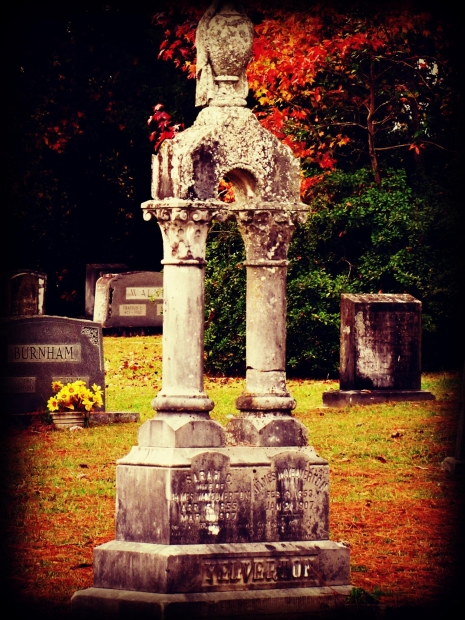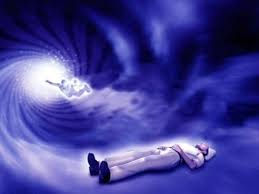By Robert Waggoner © 2016 All Rights Reserved
Have you ever dreamt of a deceased friend or relative? Did you wonder upon waking if you experienced a possible visitation or just a dream symbol? How can you tell?
In the weeks after my father passed, I found myself sitting with him at a TWA departure gate in some nondescript, silvery gray airport. My father didn’t say anything, and little happened in the dream. After a second dream of waiting with him at the TWA gate, the symbolism suddenly hit me. The TWA gate symbolically stood for ‘Trans World Airlines’ – the most appropriate airline for the recently deceased to trans-fer from the world of the living to the world of the dead.
Looking back, I now see how this dream symbolically reflected my inner emotional processing of my father’s transition. He sat at the gate with apparently nothing left to do, except for me to accept his journey. Though some might wonder if the spiritual essence of my father sat with me in these dreams, it seems to me that I sat with a dream figure, a symbolic projection of my mind.
However in lucid dreams, when I realize that I dream, I have an advantage. I can consciously engage the deceased dream figure, and see how it responds. In my book, Lucid Dreaming – Gateway to the Inner Self, I include a chapter on this fascinating topic, because oftentimes, lucid dreamers become lucidly aware upon seeing the deceased and realizing, ‘This must be a dream!’
Dream Symbol or Visitation?
So how can we reasonably differentiate a dream symbol of the deceased with that of a possible visitation? The following points may help you notice subtle distinctions that differentiate a dream symbol from a possible visitation:
- Active versus static dream figures – If the deceased dream figure initiates action or seeks to contact you or show you something, then it suggests a possible encounter with the person’s spiritual essence. But if the deceased dream figure sits like a potted plant, as my father did at the TWA gate, then the lack of purposeful activity suggests a symbolic projection of one’s mind.
- Knowledgeable dream figures – If the deceased dream figure comes with a message, warning or advice (in person or by phone, etc.), then it suggests a possible encounter. Interestingly, Frederick van Eeden the person who many believe coined the term ‘lucid dreaming’ recounted an experience where a deceased brother in law warned him of an upcoming financial loss, which van Eeden later experienced. If the dream figure seems to lack new or novel information, then it may suggest a symbolic projection.
- How he or she looks in the dream – When you encounter the deceased, do they look younger, more vital and healthy than when they passed? Or do they reflect their appearance when last seen (for example in a state of ill health and decline)? When I see my maternal grandmother in a dream and she seems in her thirties (while I only knew her in her 70’s and older), it suggests the dream figure has acted to re-cast themselves as they prefer to be seen instead of as I recall them. This observation seems to indicate a dream figure independent of my thinking or memory, which leads me to assume a dream visitation.
- Eye contact – When we engage others, we often look them in the eye. The eye to eye contact often helps us see their response or sense of inner activity. If we recall a dream of the deceased and their eyes seem active and lively, it suggests an encounter. However if they fail to look in our eyes or seem to stare passively into space, then it suggests a symbolic projection.
- Your dream occurs during grieving or long afterwards – If the dream appearance of the deceased occurs during the time of active grieving, then it may simply reflect the inner work of processing your emotions. By contrast, if the deceased appear many years later (after the normal mourning process has ended) and possibly seek you out or share information, then it seems more suggestive of a visitation encounter.
In lucid dreams, it seems easier to determine a dream figure’s status, especially if we thoughtfully interact with the deceased dream figure, judge their awareness and test their responsiveness, knowledge and behavior. We can even ask them questions and obtain information outside of our knowing, which we can later seek to validate. Processing all of this information should help clarify the nature of the encounter.
Dreamers and lucid dreamers must take care to examine personal assumptions and beliefs, when engaging the deceased. Avoid getting trapped by strong beliefs on either side of the after-death question, and simply investigate with an open mind. By investigating, observing and questioning with a curious heart, we can become more insightful explorers of the mysterious realm of dreaming.
Author Robert Waggoner wrote the acclaimed book, Lucid Dreaming – Gateway to the Inner Self (now in its ninth printing) and the recent book for beginners, Lucid Dreaming Plain and Simple with co-author, Caroline McCready (visit LucidAdvice.com ) He co-edits the free on-line magazine, Lucid Dreaming Experience, which had a special issue on deceased dream figures ( see www.DreamingLucid.com ). When he isn’t writing or giving workshops, Robert occasionally dreams of his two very talkative, but now deceased cats, Penny and Nickel.








I had a lucid dream last night about my boyfriends best friend who passed away 2 years ago. In the dream he appeared to me and my boyfriend like a light, figuratively speaking. I remember thinking, How could he be here with us if he’s dead? And that’s when I realized I must have been dreaming. My dream continued on and we had a whole day together laughing and exploring. I don’t remember exact events but I do remember how I felt. I’m thinking he may have visited us. When I woke up I felt like I wanted to go back into my dream to be with him because for the first time in a long time I felt peace and joy with him. My boyfriend was like a brother with him but I was merely just a side character in their friendship. I don’t know why he chose to come to me instead of my boyfriend but either way we were all in unison together in the dream. All day I’ve felt like I’ve been in a fog of emotions. I guess all of this to say, do you have any thoughts on what I’ve told you or any advice going forward? -sincerely, Madeline
Since I was a preteen, I can remember, being able to wake from a dream that I did not like. I knew from the circumstances that it wasn’t real, therefore I would end the dream. However, one night last week, I attempted with success, to return to a dream after waking myself up. I returned only because I was waiting for my favorite meal within the dream. I wasn’t sure it would work and was very surprised. The mind is interesting indeed.
Thank you, Cleo
I recently lost my best friend, we’re both 21 and it was and has been extremely hard so I don’t know if this is just my brain trying to cope or if this was her trying to visit me but I had a dream and was in it and oblivious then I woke up realized it was my friend ( who’d just passed) and go back to sleep aware putting myself into a lucid dream. Once Im there I talk to her and tell her she dead and ask her if she’s okay. She was very normal up until I asked her that then she just looked at me like I said something I wasn’t supposed to or like it was something she couldn’t talk about idk a little hard to explain. But I just spent as much time as I could with her until I had to wake up. Idk I can’t stop wondering if there’s more to dreaming than just our subconscious making things up